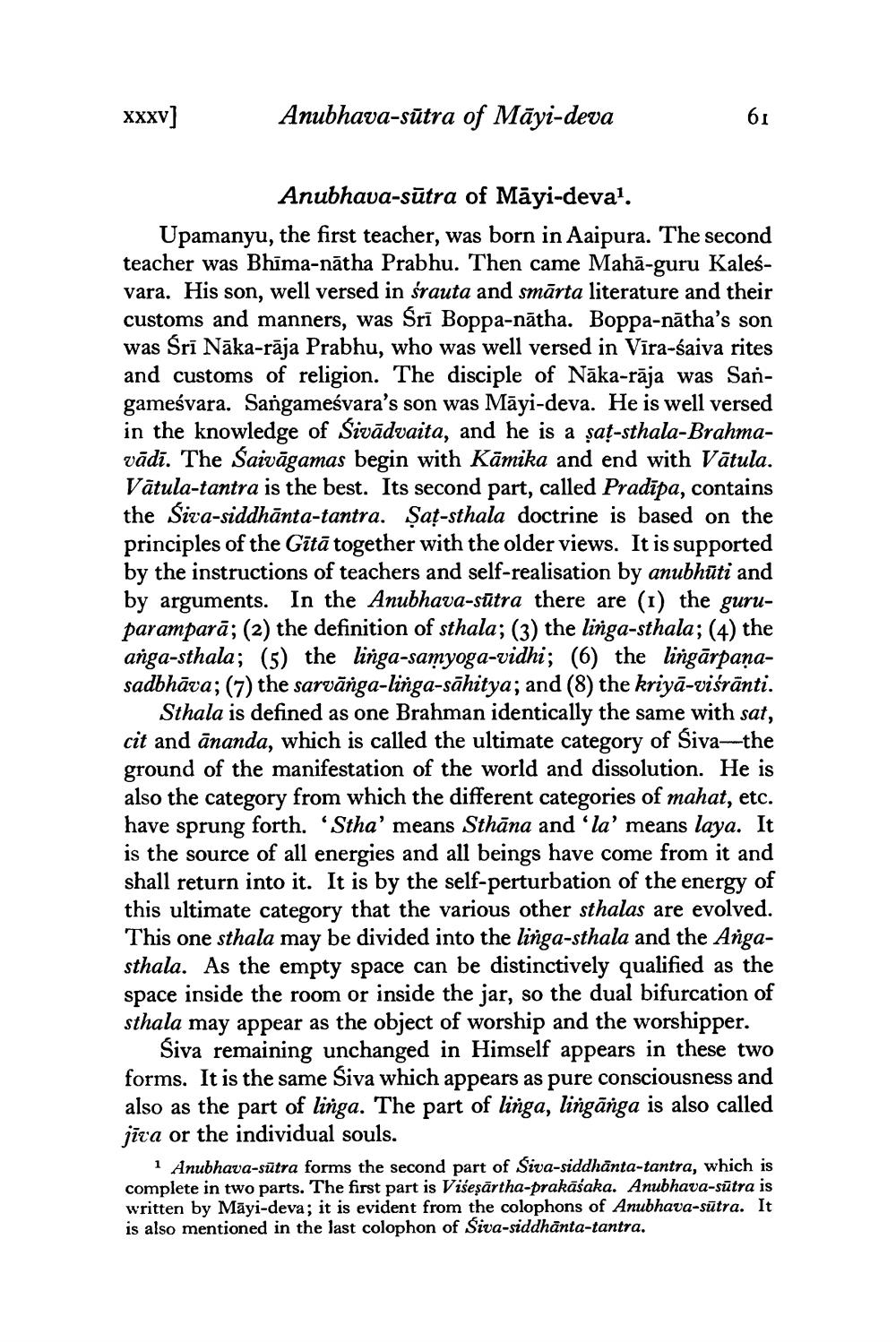________________
xxxv]
Anubhava-sūtra of Māyi-deva
61
Anubhava-sūtra of Māyi-deva'. Upamanyu, the first teacher, was born in Aaipura. The second teacher was Bhima-nātha Prabhu. Then came Mahā-guru Kalesvara. His son, well versed in srauta and smārta literature and their customs and manners, was Sri Boppa-nātha. Boppa-nātha's son was Śrī Nāka-rāja Prabhu, who was well versed in Vīra-saiva rites and customs of religion. The disciple of Nāka-rāja was Sangameśvara. Sangameśvara's son was Māyi-deva. He is well versed in the knowledge of Sivādvaita, and he is a șaț-sthala-Brahmavādi. The Saivāgamas begin with Kāmika and end with Vātula. Vātula-tantra is the best. Its second part, called Pradīpa, contains the sixa-siddhānta-tantra. Șaț-sthala doctrine is based on the principles of the Gitā together with the older views. It is supported by the instructions of teachers and self-realisation by anubhūti and by arguments. In the Anubhava-sūtra there are (1) the guruparamparā; (2) the definition of sthala; (3) the linga-sthala; (4) the anga-sthala; (5) the linga-samyoga-vidhi; (6) the lingārpaņasadbhāva; (7) the sarvānga-linga-sāhitya; and (8) the kriyā-viśrānti.
Sthala is defined as one Brahman identically the same with sat, cit and ānanda, which is called the ultimate category of Siva--the ground of the manifestation of the world and dissolution. He is also the category from which the different categories of mahat, etc. have sprung forth. 'Stha' means Sthāna and 'la' means laya. It is the source of all energies and all beings have come from it and shall return into it. It is by the self-perturbation of the energy of this ultimate category that the various other sthalas are evolved. This one sthala may be divided into the linga-sthala and the Angasthala. As the empty space can be distinctively qualified as the space inside the room or inside the jar, so the dual bifurcation of sthala may appear as the object of worship and the worshipper.
Siva remaining unchanged in Himself appears in these two forms. It is the same Siva which appears as pure consciousness and also as the part of linga. The part of linga, lingānga is also called jīva or the individual souls.
1 Anubhava-sūtra forms the second part of Siva-siddhānta-tantra, which is complete in two parts. The first part is Višeşārtha-prakāšaka. Anubhava-sūtra is written by Māyi-deva; it is evident from the colophons of Anubhava-sūtra. It is also mentioned in the last colophon of Siva-siddhānta-tantra.




